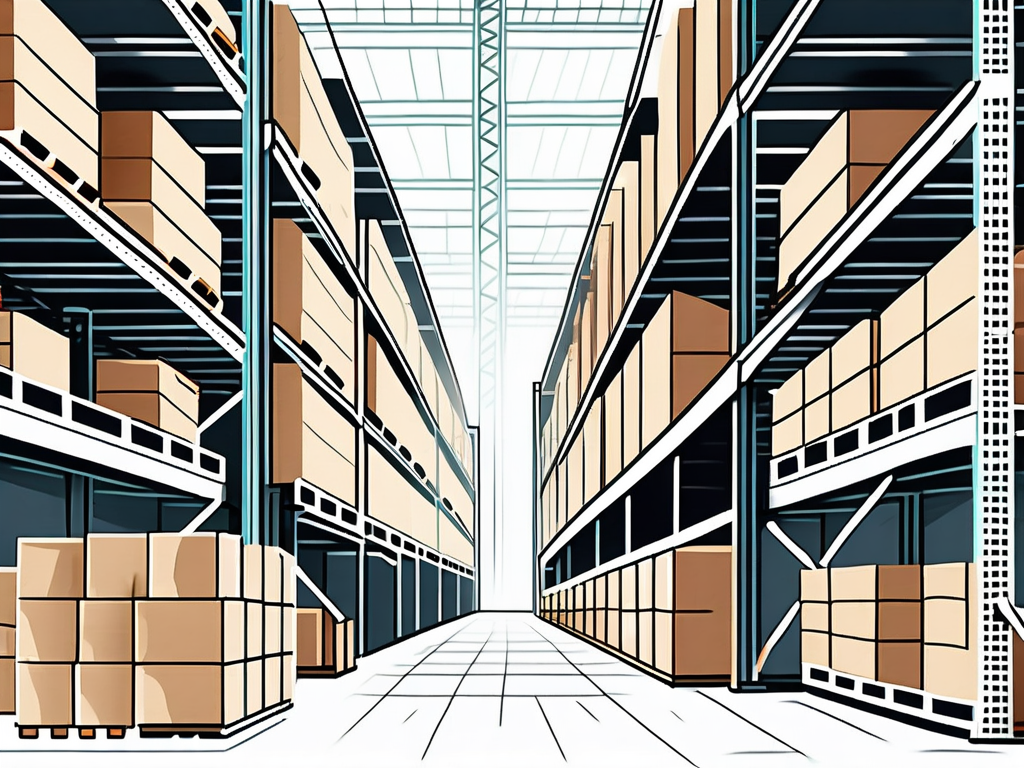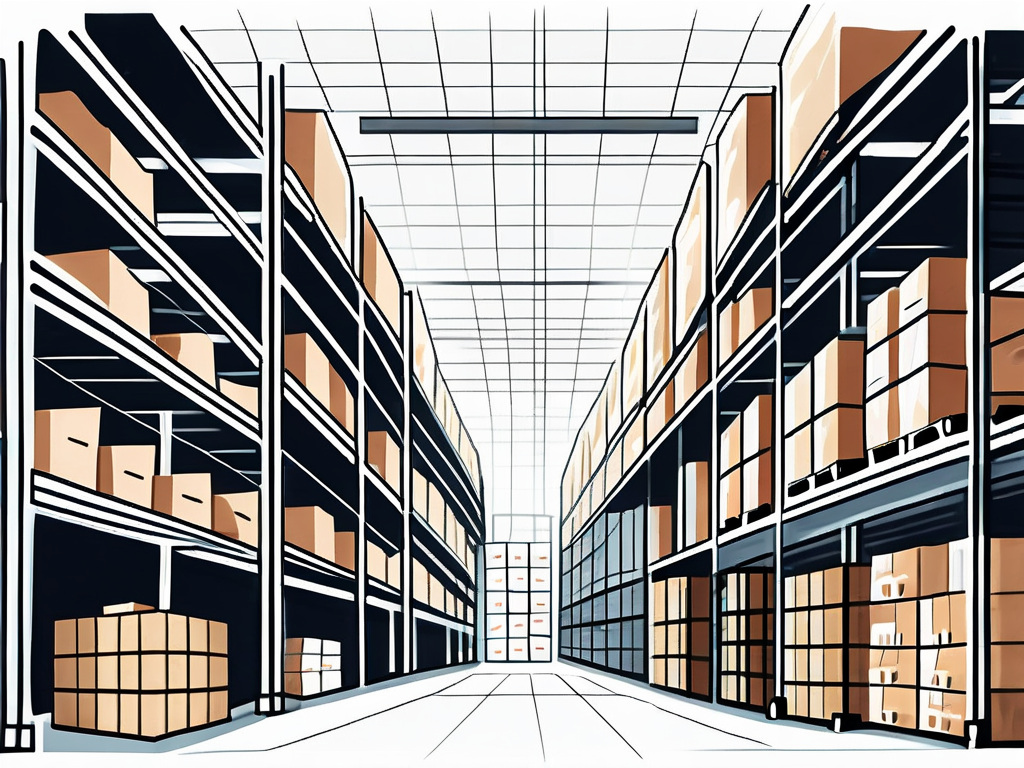
In today’s fast-paced business environment, warehouse efficiency plays a crucial role in ensuring that operations run smoothly and effectively. Warehouse efficiency refers to the ability to optimize processes, maximize productivity, and minimize waste within a warehouse facility. By implementing the right strategies, businesses can effectively streamline their operations and enhance overall efficiency. In this article, we will explore the key components of warehouse efficiency and provide you with our top 10 tips for improving warehouse efficiency.
Understanding Warehouse Efficiency
Before diving into the top tips, let’s first understand the importance of warehouse efficiency. A well-optimized warehouse not only ensures the smooth flow of goods but also helps in reducing costs, increasing customer satisfaction, and gaining a competitive edge in the market.
The Importance of Warehouse Efficiency
Efficient warehousing operations have a positive impact on various aspects of a business. These include:
- Reduced operational costs: By optimizing processes, businesses can minimize manual labor, reduce waste, and cut down on unnecessary expenses.
- Improved customer satisfaction: Efficient warehousing enables faster order processing, accurate inventory management, and timely delivery, leading to satisfied customers.
- Enhanced productivity: When workflows are streamlined, employees can work more efficiently, resulting in increased productivity.
- Competitive advantage: An efficient warehouse enables businesses to fulfill orders quickly, stay ahead of competitors, and meet customer demands effectively.
Key Components of an Efficient Warehouse
Efficient warehouses are built upon several key components:
- Optimized layout and design: A well-designed warehouse layout ensures a smooth flow of goods, minimizes travel time, and maximizes space utilization.
- Effective inventory management: Proper inventory tracking and control prevent stockouts, minimize holding costs, and improve order fulfillment rates.
- Efficient picking and packing processes: Streamlined picking and packing procedures reduce errors, increase order accuracy, and improve overall efficiency.
- Advanced technology and automation: The integration of technologies like barcode scanners, automated conveyor systems, and warehouse management systems (WMS) enhances productivity and accuracy.
- Trained and motivated workforce: Skilled employees who understand their roles and responsibilities contribute significantly to warehouse efficiency.
Furthermore, an efficient warehouse also takes into consideration the importance of safety measures. Safety protocols and equipment, such as proper signage, protective gear, and regular training programs, are crucial to creating a secure working environment for employees. Prioritizing safety not only reduces the risk of accidents and injuries but also boosts employee morale and overall productivity.
Another key aspect of warehouse efficiency is effective supplier management. Building strong relationships with suppliers and implementing efficient communication channels can help streamline the supply chain, reduce lead times, and ensure a steady flow of goods. Regular evaluations of suppliers’ performance and the establishment of mutually beneficial partnerships contribute to the overall success of the warehouse operations.
Strategies for Improving Warehouse Efficiency
Implementing a Warehouse Management System
One of the most effective ways to improve warehouse efficiency is by implementing a warehouse management system (WMS). A WMS streamlines various processes, including inventory control, order fulfillment, and resource management. It provides real-time visibility into inventory levels, automates repetitive tasks, and optimizes warehouse workflows.
Furthermore, a WMS can enhance labor management by tracking employee performance, assigning tasks based on skill levels, and generating performance reports. This data-driven approach allows for continuous improvement and optimization of warehouse operations, leading to increased productivity and cost savings in the long run.
Optimizing Warehouse Layout and Design
The layout and design of a warehouse can have a significant impact on efficiency. It is essential to ensure that items with high demand are easily accessible, minimize travel distances, and optimize the use of vertical space. By organizing products logically and efficiently, picking and replenishment processes become more streamlined, saving time and minimizing errors.
In addition to optimizing the physical layout, implementing lean principles such as 5S methodology can further improve warehouse efficiency. This involves organizing the workspace to eliminate waste, standardizing processes, and maintaining a clean and organized environment. By fostering a culture of continuous improvement and efficiency, warehouses can operate at peak performance levels while reducing costs and increasing customer satisfaction.
Top 10 Warehouse Efficiency Tips
Tip 1: Regularly Review and Update Processes
Warehouse processes should be continuously reviewed and updated to identify areas for improvement. By analyzing workflows and eliminating bottlenecks, businesses can optimize operations and enhance efficiency. Regular process reviews also help in adapting to changing market demands and consumer preferences.
Tip 2: Invest in Employee Training
Well-trained employees are essential for efficient warehouse operations. Investing in comprehensive training programs ensures that employees understand their roles, use equipment correctly, and follow best practices. Ongoing training programs also help in keeping employees updated with the latest industry trends and technologies.
Tip 3: Embrace Automation
Automation plays a vital role in enhancing warehouse efficiency. Technologies such as automated storage and retrieval systems (AS/RS), conveyor belts, and robotic picking arms can significantly reduce manual labor and increase productivity. By automating repetitive and time-consuming tasks, businesses can reallocate resources to more value-added activities.
Tip 4: Prioritize Safety Measures
A safe warehouse environment not only protects employees but also contributes to efficiency. Implementing safety protocols, providing proper training, and conducting regular safety inspections ensure that operations run smoothly without any disruptions due to accidents or injuries.
Tip 5: Utilize Space Effectively
Optimizing warehouse space can significantly improve efficiency. Implementing strategies such as vertical storage solutions, rack systems, and mezzanine floors enable businesses to maximize their storage capacity. By using the available space effectively, businesses can reduce congestion, improve accessibility, and streamline order fulfillment processes.
Tip 6: Maintain Equipment Regularly
Regular maintenance of warehouse equipment is crucial for preventing breakdowns and ensuring smooth operations. Implement a preventive maintenance program to identify potential issues before they impact productivity. Conduct regular inspections, cleanings, and repairs to keep equipment in optimal condition.
Tip 7: Implement Lean Inventory Practices
Applying lean inventory practices enables businesses to reduce inventory holding costs and improve order fulfillment rates. By implementing concepts like just-in-time (JIT) inventory management and reducing excess stock, businesses can minimize waste, optimize storage space, and maximize cash flow.
Tip 8: Use Data to Drive Decisions
Data analytics plays a vital role in warehouse efficiency. By collecting and analyzing data related to inventory levels, order processing times, and employee productivity, businesses can identify bottlenecks and make data-driven decisions to optimize operations. This enables businesses to adapt quickly to changes and make continuous improvements.
Tip 9: Encourage Employee Feedback
Employees on the front lines often have valuable insights and ideas for process improvement. Encouraging open communication and regularly seeking feedback from employees can uncover inefficiencies and lead to innovative solutions. Involving employees in decision-making processes also boosts morale and fosters a culture of continuous improvement.
Tip 10: Continually Monitor and Adjust
Efficient warehouse management is an ongoing process. It is essential to regularly monitor key performance indicators (KPIs) and make adjustments as necessary. By tracking metrics such as order accuracy, on-time delivery, and inventory turnover, businesses can identify areas for improvement and implement targeted solutions.
But wait, there’s more! In addition to these top 10 tips, there are a few other strategies that can further enhance warehouse efficiency. Let’s dive into them:
Tip 11: Implement Cross-Docking
Cross-docking is a logistics strategy that involves unloading incoming shipments from suppliers and loading them directly onto outbound vehicles for immediate delivery. By eliminating the need for storage and reducing handling time, cross-docking can significantly improve order fulfillment speed and reduce inventory holding costs.
Tip 12: Optimize Order Picking Routes
Efficient order picking is crucial for warehouse productivity. By optimizing order picking routes based on product popularity, proximity, and order frequency, businesses can minimize travel time and increase picking efficiency. Utilizing warehouse management systems (WMS) and implementing intelligent routing algorithms can help streamline the order picking process.
By incorporating these additional strategies into your warehouse operations, you can further enhance efficiency and productivity. Remember, continuous improvement is key to staying ahead in today’s competitive market. So, keep exploring new technologies, analyzing data, and seeking feedback to drive ongoing enhancements in your warehouse management practices.



